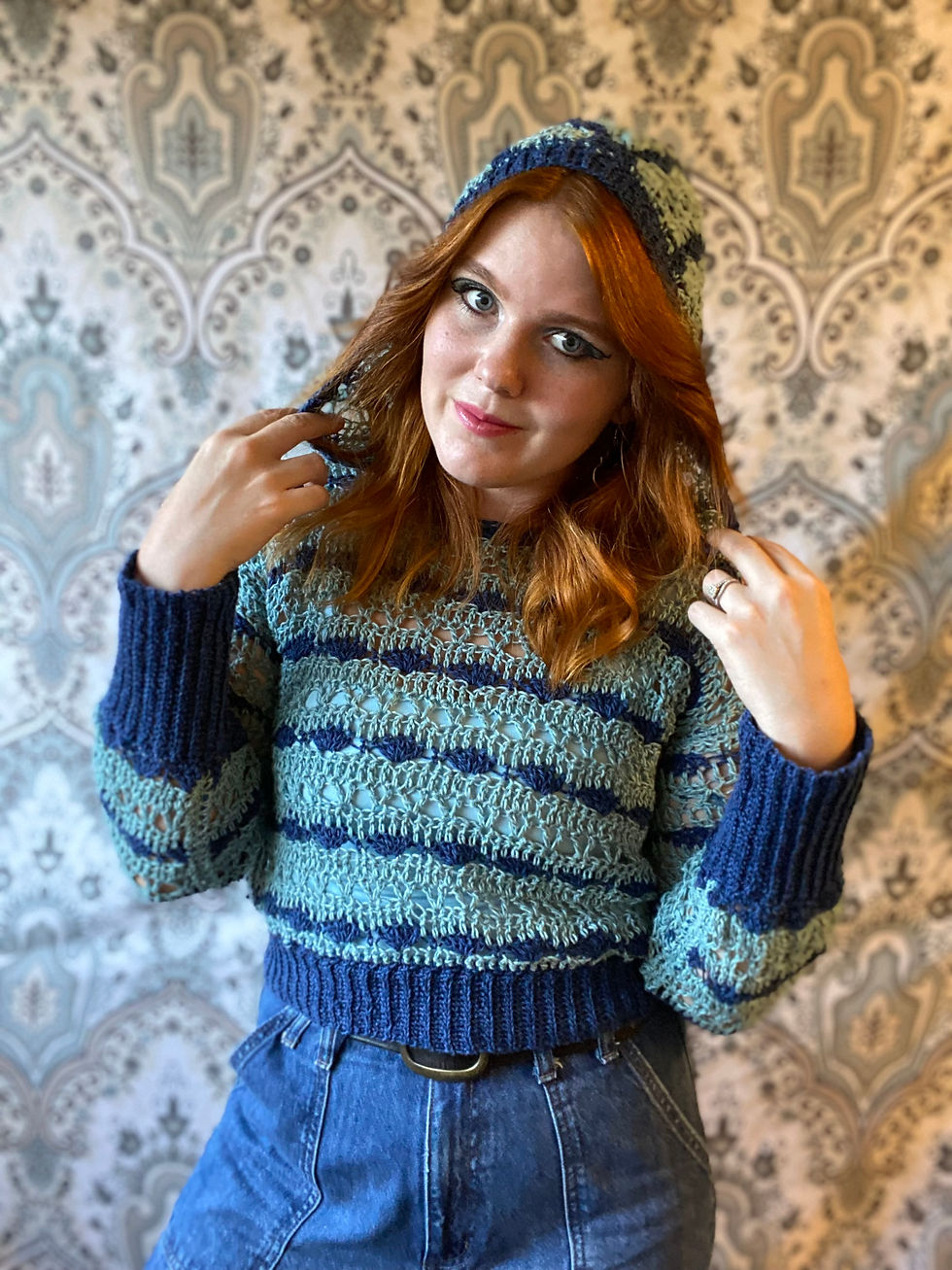Gauge & Tension
- Callie Z
- Sep 9, 2024
- 3 min read
If you are new to fiber arts you've likely seen or heard the words "gauge" and "tension" thrown around. I put together a couple paragraphs explaining the two VERY important terms. These paragraphs will also explain how to adjust your tension in order to fit a given gauge measurement!
What is Gauge? Why is it important?
Gauge is a measurement of how large your stitches are. To measure this you measure how many stitches and rows there are in a given measurement. Making a gauge swatch with the hook size, stitch and yarn that a pattern calls for can help you find out how you might need to adjust tension, hook size, and yarn weight, to better meet the pattern sizing.
For example: a pattern may call for your gauge swatch to be a 4in x 4in crochet square and that it be 12 rows tall and 18 stitches wide. To measure this, place a ruler horizontally on your gauge swatch and count how many stitches are in 4 inches, then place the ruler vertically on the gauge swatch and count how many rows are in 4 inches. If you have 13 rows and 20 stitches in the 4in x 4in gauge swatch then your gauge is too tight, you are fitting too many stitches in that given measurement, loosening up your tension or sizing up a hook size can fix this!
Gauge swatching is important mainly for when you are making clothing items so that you can make sure you are using the right tension (see next section), hook size, and yarn weight in order to match what gauge a pattern calls for. If you match what the pattern calls for, then your project will end up the right size. If not your project might end up bigger or smaller than it was meant for!
What is Tension?
Tension is exactly as it sounds, it is how tight or loose your stitches are as you work your projects. Finding the tension that works best for you is crucial to learning and enjoying crochet. There is no “Right” tension, there is just the tension that works best for you. That being said, everyone has their own tension that they comfortably crochet at because everyone crochets in different ways; Sometimes we might have to adjust other factors (bullets below) in order to better meet a gauge a pattern might call for! When learning to crochet you want to find the tension that is both comfortable for you and the tension that doesn’t make it difficult to crochet. Sometimes when people try crochet and they don’t know that their tension is too tight or too loose, they have a miserable time, and quit. To avoid this try:
Tight Tension?
If your stitches seem hard to slide off the hook, your tension is too tight!
To adjust for a looser tension try to take a deep breath, shake your arms and body out, and sit in a relaxed position. Just by getting some tension out and relaxing your body a bit you will crochet a bit looser.
Maybe find a more comfortable way to hold your crochet hook and working yarn.
Try to make sure not to pull the working strand of yarn tight when you are crocheting.
Try switching to a larger hook size.
Finally, make sure you are working on the body of the hook and not the neck! (See crochet hook anatomy)
Loose Tension?
If your stitches look like they are not coming together, look loose, or slide right off the hook when you move the hook, your tension is too loose! To remedy this try these things:
Maybe find a more comfortable way to hold your crochet hook and working yarn.
Gently pull the working strand of yarn a little tighter (but not too tight!) After completing a stitch.
Switch to a smaller hook size.
Want to read more like this? I wrote up a Crochet Terms and Reference Guide which is full of things I wish I knew when I was first getting started with crochet! Click below to download the document for FREE!
Still confused? Message me with any questions you might have, I would love to clarify!



Comments